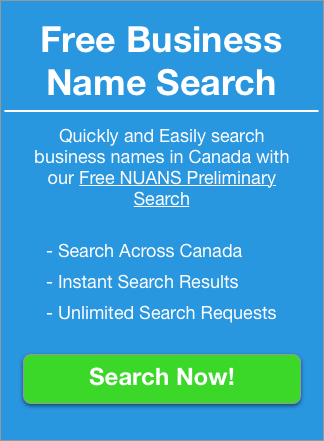How To Find Your Ideal Customers

It’s one thing to sell your product or service to the masses, and it’s quite another to sell to a target market.
Even though selling to the masses might seem the best path to profitability, this is not always the case.
Finding your ideal customers is the best way to boost your sales in the long-term, especially if your business offers a niche product.
Knowing your target market enables you to design a suitable marketing and sales strategy.
So if you have been marketing your product to just about anyone who cares to listen, it’s time to make a change.
In this post, we’re sharing the various methods you can use to find your ideal customers. Read on!
Know the Problem Your Product/Service Solves
You’ve probably heard this countless times: Offering a product or service that solves a market problem is the key to starting a profitable business.
As such, the first step to identifying your target customers is to know the kind of problem your product or service solves.
If you have not launched your product yet, give samples to a couple of relatives or friends. Let them use it, and then ask for their feedback.
Obviously, you must be having an idea of what your product does. But will your potential customers use it the way you envision?
Your friends and relatives should be able to confirm whether they used your product for the intended purpose.
Having a good handle on the problem your product solves will help you to:
- Tell potential customers how the product will make their lives easier or better
- Explain additional needs the product will satisfy.
If your product is already on the market, you can ask your customer-facing employees to ask customers whether it satisfies their needs.
Alternatively, you can encourage customers to share their views on your website or social media channels.
Get Hints From Your Competitors
However innovative or unique your product is, chances are there is already an established competitor out there offering the same thing.
Sure, nobody likes competitors. They can snatch away your customers, steal your marketing ideas, and even contribute to the failure of your business.
But again, competitors can be a valuable resource to your business.
If your competitors are established in the industry, and you are offering a similar product or service, you can use them to find your ideal customers.
Go to their websites, browse through to the “about us page” and find out what they’re saying about their products and customers.
A typical “about us page” contains a range of information, including the kind of customers the company serves.
For instance, if your product is a travel app and one of your direct competitors serves “high-income millennials with a passion for traveling” you have your ideal customer right there!
Do Market Research
It’s possible that your early product testers and competitors might not give you a detailed idea of your ideal customers.
In this case, you should invest in market research.
Although hiring a market research firm to perform this task on your behalf comes with an additional cost, you’re better off starting your business with a strong idea of who exactly will buy your products.
This is particularly useful if you’re planning to sell your product across a large geographical region.
Your market research provider will dive into the market with samples of your product and ask potential consumers what they think about it.
At the end of the research, you will have a comprehensive view of your target market.
Build A Customer Profile
Customer profiling is the process of creating a visual image of your ideal customer.
To do this, use the following demographics/characteristics.
Age
What’s the average age range of your target customer? Customers typically are grouped into generations:
- Pre-Boomers – Born before 1946 (Over 71 years old in 2017)
- Baby Boomers – Born between 1946 and 1965 (Between 52-71 years old in 2017)
- Generation X – Born between 1966 and 1980 (Between 37 and 51 years old today)
- Generation Y (Millennials) — Born between 1981 and 2000 (Between 17 and 37 today)
- Generation Z (Post-millennials, iGeneration) – Born after 2000 (oldest gen z in 2017 is 17 years old)
Determining your potential customer’s age will help you deploy suitable marketing tools.
For instance, if your product is designed for millennials, the best way to reach them is through digital marketing. In Canada, 51 percent of millennials buy goods and services through the internet at least once a month.
On the other hand, if your business focuses on boomers, you will need to spend your advertising dollars on TV ads. Canadian boomers just can’t seem to get enough of traditional TV!
Gender
Is your product designed for males, females or both?
Knowing the gender of your customers will help you design persuasive packaging materials.
For example, if you’re selling cosmetic products for women, using purple on your product packages or marketing materials might improve your sales.
Why?
Women tend to love purple, according to a study conducted by Philip Cohen, a sociologist at the University of Maryland.
Income Level
Does your product or service target low-income, middle-class or the wealthy?
Your customers’ income level will influence your pricing strategy.
If your company targets low-income earners, then you must do all you can to keep the cost of your product or service as low as possible.
Income levels can also influence your marketing strategy.
If you sell high-end luxury products, the most effective way to reach the wealthy would be to advertise in luxurious magazines, as opposed to TV or digital advertising.
Location
Having an idea of where your potential buyers live will shape your production and marketing strategy.
You may want to move your production base nearer to your target market to lower distribution costs. And, you will need to localize your marketing campaigns to the regions where your customers live.
Other customer demographics you should pay attention to include:
- Marital status and family size
- Type of residences – owned or rented?
- Leisure activities
- Means of transportation.
Stay On Top Of Your Customers’ Changing Needs
You see, the consumption habits of customers change from time to time.
What was hot two years ago may not have a strong demand this year or the next.
You must, therefore, keep track of changing consumer trends to find your ideal customers. One way to do this is to examine their purchasing methods.
For instance, you already know millennials like to buy stuff on the internet. But what devices are they using?
Desktop browsing was very popular, but today the majority of millennials browse the web using their mobile devices. And as technology advances, there is no telling what will be popular in the future.
To find new customers and keep current ones hooked to your business, you must adapt your products to meet their changing needs.
Is Your Product Line Expanding?
As an entrepreneur, you may need to expand your product line as your business grows.
You need to keep in mind that as you add more products or services, your target market also keeps expanding.
If you started the business by selling cosmetic products for women and now you have expanded your collection to include cosmetics for men, you need to know how this will influence your customer search efforts.
In addition to keeping track of your expanding product line, don’t forget to take note of upgrades to your existing offerings.
When you introduce new features to a current product, it may no longer work the way your existing customers expect it to work. As a result, old customers may move on, and so you will need to acquire new ones.
Conclusion
Knowing how to find your ideal customers is a move that can make or break your business.
Whether you’re a newbie or a seasoned business pro, these tips will help you to develop a clearer picture of who will buy your product or service.
If you’re looking to register your company, use our Free NUAS Preliminary Search to find a company name.

